POINTS OF INTEREST
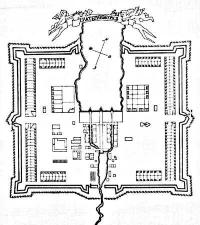 Yekaterinburg
is not very old. But over the course of its 277-year history,
it has proven itself to be a special and even unique city. Yekaterinburg
enjoys not only a special geographical location but a role as
one of the founders of Russian industry.
Yekaterinburg
is not very old. But over the course of its 277-year history,
it has proven itself to be a special and even unique city. Yekaterinburg
enjoys not only a special geographical location but a role as
one of the founders of Russian industry. 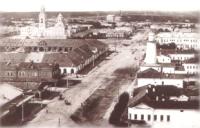 It
has a unique mixture of different architectural, historical, and
cultural rarities, which may never repeated. That is why Yekaterinburg
can claim to be granted formal status as Russia's most historical
city.
It
has a unique mixture of different architectural, historical, and
cultural rarities, which may never repeated. That is why Yekaterinburg
can claim to be granted formal status as Russia's most historical
city.
More than 60 monuments of history and culture are
located in the city, and 43 of them are considered to be national
monuments because of their special significance.
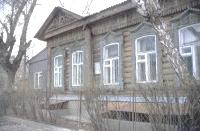 The
heart of Yekaterinburg is its dam, which permitted the initial
development of the city's industrial base. The dam was erected
in 1723 and survived by two later reconstructions.
The
heart of Yekaterinburg is its dam, which permitted the initial
development of the city's industrial base. The dam was erected
in 1723 and survived by two later reconstructions.
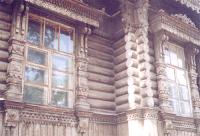 At
present it is an impressive industrial monument of the 18th century.
Unfortunately, very few buildings of the old factory area have
been preserved. Now they house the Museum of History, Architecture,
and Technology of the Urals, and the Natural Museum, both of which
are located in the so-called Historical Park. The oldest building
of Yekaterinburg, which dates from 1764 and recently was reconstructed,
is also situated here. At present this is the Fine Arts Museum.
At
present it is an impressive industrial monument of the 18th century.
Unfortunately, very few buildings of the old factory area have
been preserved. Now they house the Museum of History, Architecture,
and Technology of the Urals, and the Natural Museum, both of which
are located in the so-called Historical Park. The oldest building
of Yekaterinburg, which dates from 1764 and recently was reconstructed,
is also situated here. At present this is the Fine Arts Museum.
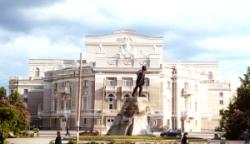 Yekaterinburg
of the 18th century was a wooden city. However, the city's first
stone-constructed buildings also appeared here during this period.
At most these were administrative buildings - for example, the
Main Board of the mining factories, where the Urals Conservatory
is located now.
Yekaterinburg
of the 18th century was a wooden city. However, the city's first
stone-constructed buildings also appeared here during this period.
At most these were administrative buildings - for example, the
Main Board of the mining factories, where the Urals Conservatory
is located now.
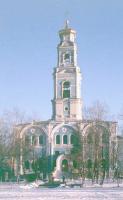 In
the late 18th and the early 19th centuries a new architectural
style -classicism - influenced Yekaterinburg landscapes. The palace
on Voznesenskaya Hill, with its luxurious park, is the most famous
example of this style.
In
the late 18th and the early 19th centuries a new architectural
style -classicism - influenced Yekaterinburg landscapes. The palace
on Voznesenskaya Hill, with its luxurious park, is the most famous
example of this style. 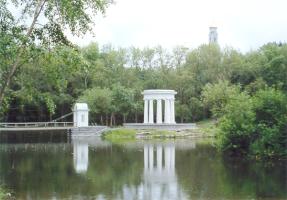 Many
churches and chapels made the city's panorama very beautiful and
picturesque. In the beginning of the 20th century there were about
50 churches, of which only 6 still stand today.
Many
churches and chapels made the city's panorama very beautiful and
picturesque. In the beginning of the 20th century there were about
50 churches, of which only 6 still stand today.
There are quite a few buildings in the constructivist
style within the city. Typical of this style are such examples
as the Main Post Office, the "Ural'skyi Rabochyi" printing
house, the movie studio, the famous White Tower, the "Dinamo"
Recreational Center, etc.
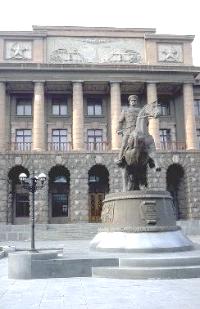 The
Soviet period brought new trends to Yekaterinburg's architecture:
luxury and rationalism, which reflected the influence both of
ideology and asceticism. New tendencies in the development of
world architecture have also affected the city. Some of the most
well known structures of this time include the Military Headquarters,
the Urals Polytechnical Institute, the Railroad Administrative
Building, and the Philharmony. The style of the famous Ural's
architect K.Bykov is found there.
The
Soviet period brought new trends to Yekaterinburg's architecture:
luxury and rationalism, which reflected the influence both of
ideology and asceticism. New tendencies in the development of
world architecture have also affected the city. Some of the most
well known structures of this time include the Military Headquarters,
the Urals Polytechnical Institute, the Railroad Administrative
Building, and the Philharmony. The style of the famous Ural's
architect K.Bykov is found there.
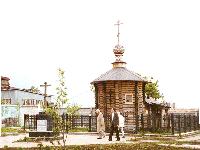 The
city's history is full of events. Many expeditions to Siberia,
Central Asia and the Far East passed through Yekaterinburg. The
city was visited by Russian tzars and members of their families.
Here also occurred a tragedy - the assassination of the last Russian
The
city's history is full of events. Many expeditions to Siberia,
Central Asia and the Far East passed through Yekaterinburg. The
city was visited by Russian tzars and members of their families.
Here also occurred a tragedy - the assassination of the last Russian
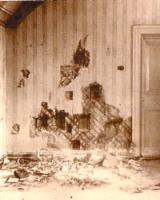 emperor
Nicolas II and all his family members - which took place in the
basement of Ipatiev's house during the night of July 16 and 17,
1918. New Memorial Church will be built there soon to become a
symbol of national reconciliation and repentance.
emperor
Nicolas II and all his family members - which took place in the
basement of Ipatiev's house during the night of July 16 and 17,
1918. New Memorial Church will be built there soon to become a
symbol of national reconciliation and repentance.
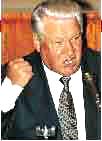 First
Russian President Boris Yeltsin lived and worked in the city in
1960s and 1970s.
First
Russian President Boris Yeltsin lived and worked in the city in
1960s and 1970s.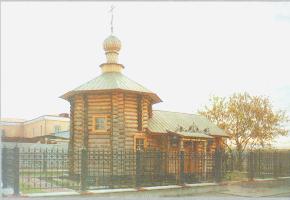
There are many monuments in Yekaterinburg. Among
them are the monument to revolutioner Malyshev and "The Black
Tulip". Russian soldiers during the Afghan campaign named
"The Black Tulips" airplanes which deliver coffin with
the dead Russian solders back to Russia.
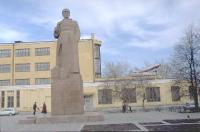
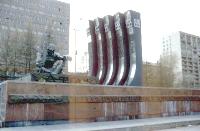 There
are many remarkable places in 277-year-old Yekaterinburg, all
of which can not possibly be described in this small web site.
This brief information is intended to provoke the interest of
all Yekaterinburg's inhabitants and guests of the Ural's to the
history of our remarkable city.
There
are many remarkable places in 277-year-old Yekaterinburg, all
of which can not possibly be described in this small web site.
This brief information is intended to provoke the interest of
all Yekaterinburg's inhabitants and guests of the Ural's to the
history of our remarkable city.